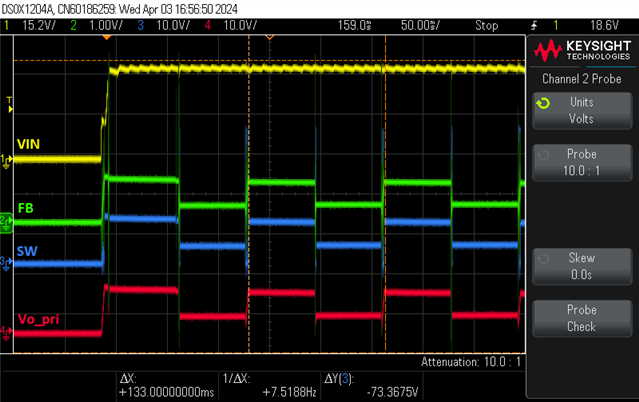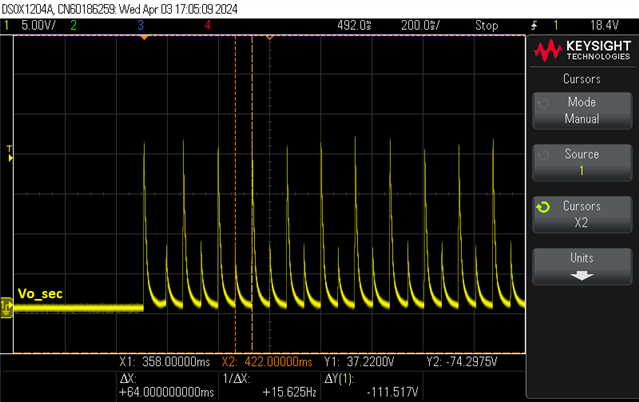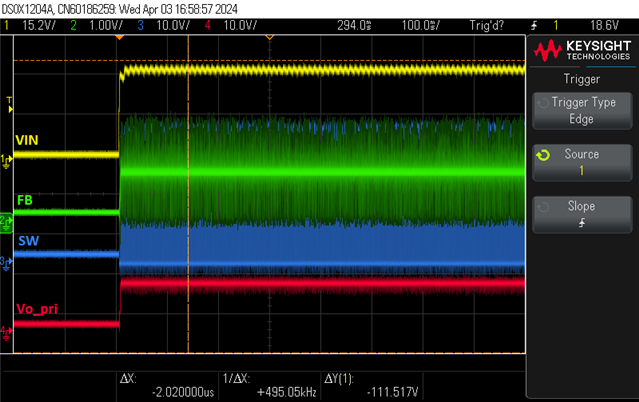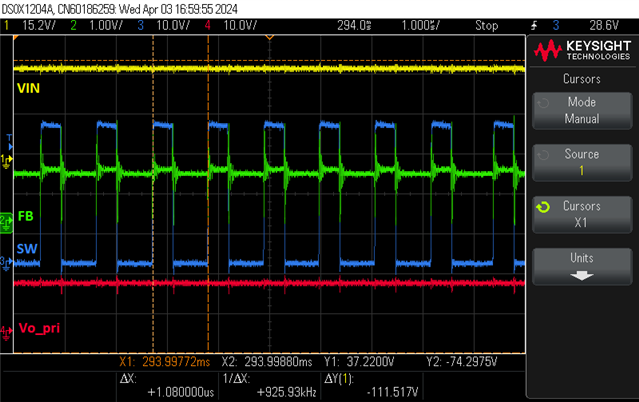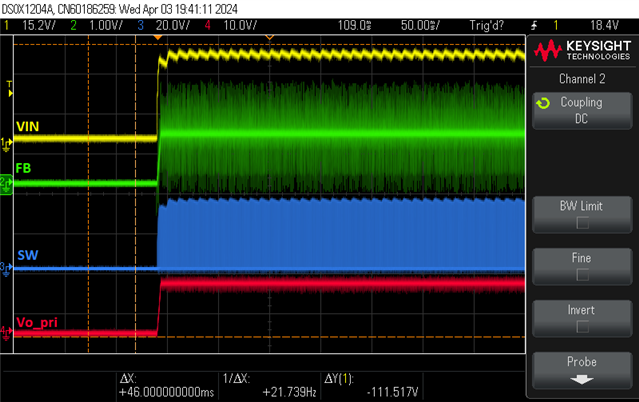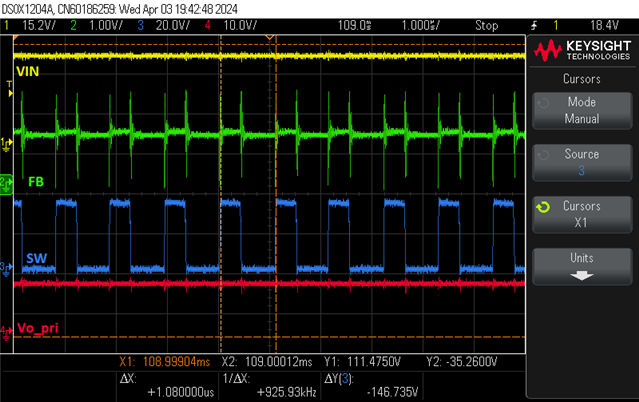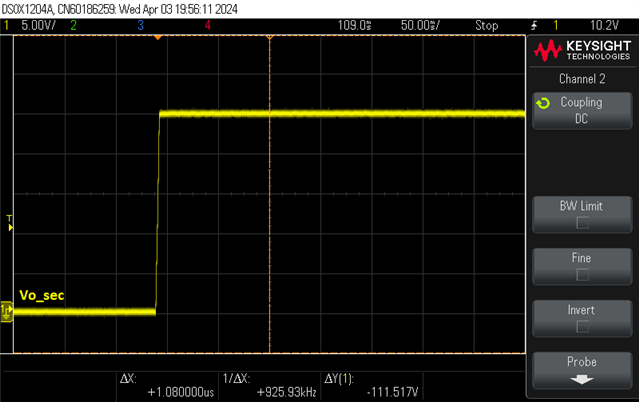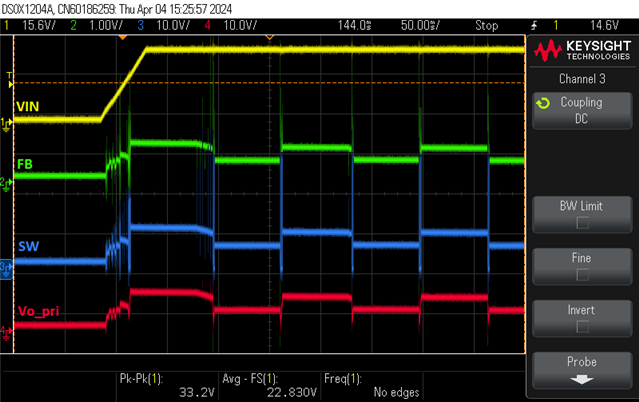Hello,
I have designed two 24V isolated power supplies by using the LM5169 in Flybuck converter.
Could you please review the following schematic and give me your advice?
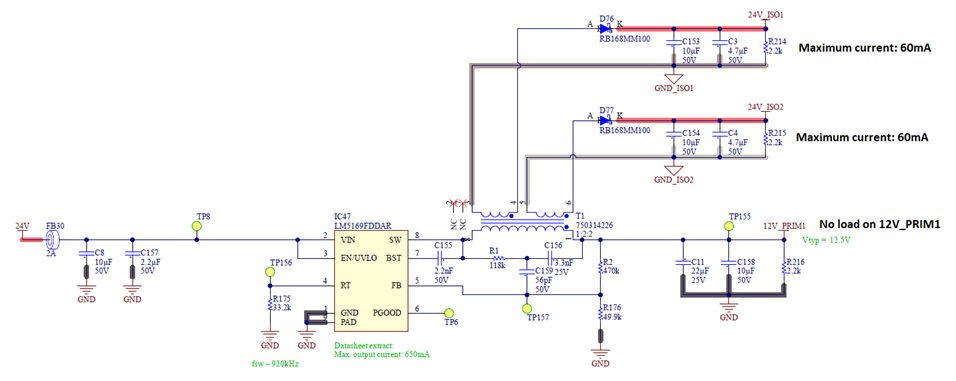
I have prototyped this schematic and I meet a problem at start-up.
To start correctly the 12V_PRIM1, I have to put a load on the primary side (100Ω for example).
Then, when the DCDC is started, I can remove the load and the flybuck works correctly on the 12V_PRIM1, 24V_ISO1 and 24V_ISO2.
So I have a question, do we have to load the primary side if we only need both isolated power 24V_ISO1 and 24V_ISO2?
Thank you.
Best Regards


